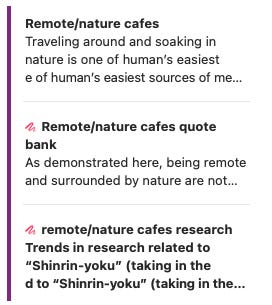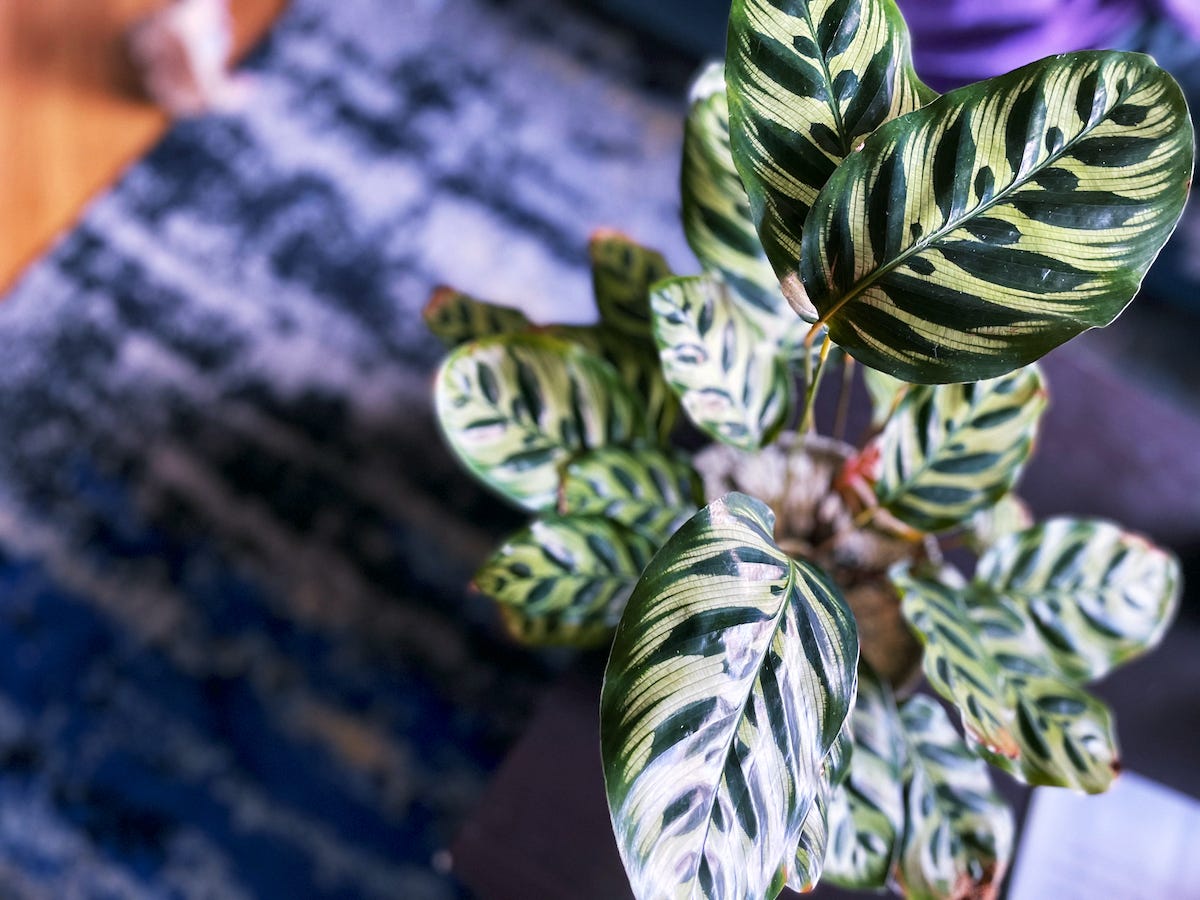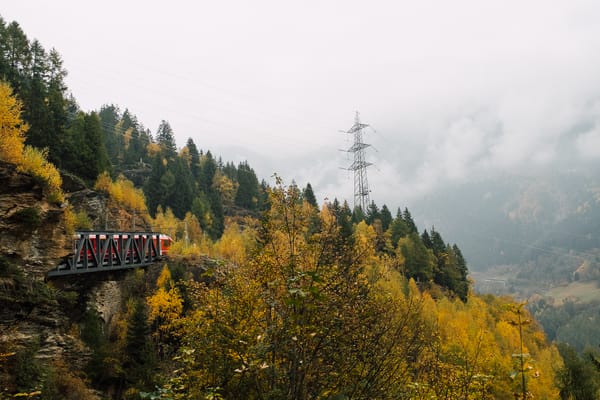My writing process
A detailed look at what goes into a reported & researched article
📝 Notes from Jenn:
- Reminder that in December, this newsletter will be in experimental mode, where I try out my “ideal” version of the newsletter.
- Do you work in coffee? Fill out the GFB wage survey! Disclosure: I’m on the GFB board.
- Sprudgie nominations are now open, with a wide range of categories available.
- I returned from a weekend getaway yesterday! Over two days, I trekked 92 floors hiking up hills and mountains. Surprisingly, my legs are not tired.
📜 Published: Brewing A New Narrative For Vietnamese Coffee In America
For being the world’s second-largest coffee-producing country after Brazil, it’s remarkably rare to find any coffee in the United States designating Vietnam as an origin country.
🔏 Last week, paid subscribers received an update on how my Mandarin classes are going.

My writing process
My writing workflow is probably more elaborate than it should be. I’m a slow writer. At least, I believe I am. I would never survive in a newsroom. It takes me what feels like forever to gather interviews, and that part alone isn’t a single task.
This starts once I’ve had a pitch approved. I divide my writing process into a few stages:
Research: I find similar articles, examine their angles, what they might be missing, and follow any links they incorporated. I also brainstorm broad categories of people I want to interview (for example, in a boundaries piece, I wanted a boundaries expert – preferably someone licensed in psychology – to talk to). Then, I research specific people who would be good interviewees. Also in this stage is research into research (yes, very meta). I want to know what research has already been done and if it’s important to include.
Interviews: In this stage, I begin identifying my top potential interviewees and reach out to them via email. For each person, I document when I contacted them and via what method (such as a contact form). If I receive a positive response, then we set up the interview. In the past, I used to do just phone interviews. Now, I’ve broadened to email, WhatsApp, Instagram DM, Messenger, Twitter DMs, Zoom, and Skype. When your interviewee is on the other side of the globe, it makes more sense to send questions over. This is especially important for those who aren’t native English speakers.
Before each interview, I perform more in-depth research on the person and company. I pull up news articles, look at their website and social media pages, and draft up the questions. After the interview, I send the audio file to Temi, my AI transcriber. The turnaround on this is mere minutes. I go through the transcript to highlight usable quotes, export those, and then paste them into my “quote bank.”
what one article’s set of notes looks like More research: I go back to research studies and journals and pull quotes from those. This gets compiled into a research note. Both the quote bank and the research studies live in what Ulysses calls “material sheets.” I link these up with the article draft.
Writing: Oftentimes, this begins with a brain dump. I usually try and write an intro, but if it doesn’t appear, I just start writing sentences that could be in an article. At that moment, it feels like terrible writing. This dump is often all over the place with disjointed thoughts, sentences, sometimes variations on those sentences. My self-confidence is very low here, but I keep going because it’s part of my process.
If I have brain fog, then I will take a walk and make myself actively think about the topic and sentences I would write. This usually leads to me dictating to my phone.
I need at least three days for writing. I don’t write all day. I’ve just learned that it’s easier for me to see that the brain dump I thought was terrible isn’t actually bad (I usually keep 80% of a brain dump). Having a night in between makes me feel slightly more confident in my writing. The writing stage can take up to five days, depending on the piece.
I write in Ulysses in markdown. It gives me the ability to also write notes to myself (for example, check on a research study date later). Sometimes my writing looks like a mess of “This person (check on name) said that plants are cool in this article (needs link) in year date (check).” While I’ll have the quote bank open next to my draft, it’s sometimes easier to write—knowing that the quotes do exist—but not stop to grab the quotes. If I’m in a creative flow, I’m going with the flow, I’m not going to stop and search around. Later on, I’ll go through notes and add the actual quotes.Editing: I do many rereads of my piece once I think I’m “done” writing. This is where I rearrange paragraphs for better flow, add links to websites, fact check, spellcheck, and grammar check. Then, I preview it as a document to see if it looks visually okay—no giant paragraphs or solo quotes hanging out alone. If I do a lot of rewrites on sentences, I’ll create an “abandoned sentences” note where I throw sentences that I liked but edited out. It’s also possible that I’ll grab sentences from there and put them back in! Finally, I’ll run Grammarly to see if anything else is off. I don’t always take their suggestions.
After submitting the piece, I may receive questions or edits back that I need to address.Promoting: Once a piece goes up, I try to promote it. This means talking about it on social, pulling excerpts, screenshotting excerpts, and tagging interviewees to thank them. I also send the piece to my interviewees and thank them for their time. A quote correction might come back during this phase, which I’ll then pass on to the editor.
Other stuff: All my pieces are documented in ClickUp with clients, writing topic, writing format, and publishing date in my work tracker. Every stage is mapped out in timeline format, so I know what to work on and when. Using ClickUp for planning is still new to me, so I’m tweaking the workflow as I go along.
I recently subscribed to Authory so it can auto-load in my published pieces and I can create collections/portfolios to share. It’s easier than manually updating and publishing my own portfolio.
So, there’s my very slow writing process! Next week for paid subscribers, I’ll share a behind-the-scenes look at what went into assembling the Vietnamese-owned coffee companies article..

🤳🏻 social media
Aside from all the things happening at Twitter, not many big updates have happened on the social platforms.
Twitter checkmarks are still up in the air. Musk wants to add encryption to DMs.
Instagram added the ability to add music to still image posts.
TikTok launched new audience insight tools.
📤 digital marketing
- Why the Creator Economy is a Huge Opportunity for Marketers, According to Joe Pulizzi [+ New Data]: “Over the last 18 months, the creator economy has been all the rage — and it's proven to be incredibly lucrative. In fact, as of 2022, the creator economy's market size is estimated at $104.2 billion.”
- 8 Holiday Giveaway Ideas To Boost Revenue: “The holidays are right around the corner, so companies everywhere are gearing up to run fun holiday deals and giveaways. You're in luck if you need fresh ideas for your holiday giveaways.”
👀 interesting reads
Do You Really Want to Read What Your Doctor Writes About You?: [freemium] “You’re now allowed to see everything physicians say about you in their notes. It’s complicated.”
Who Gets "Quality" Leisure?I love hobbies. I love my own hobbies. I love that my partner is figuring out hobbies for the first time in his life after years of prime millennial optimization. And one of his hobbies is golf. I used to play golf. My dad played and plays a whole lot of golf. I understand why peop…







